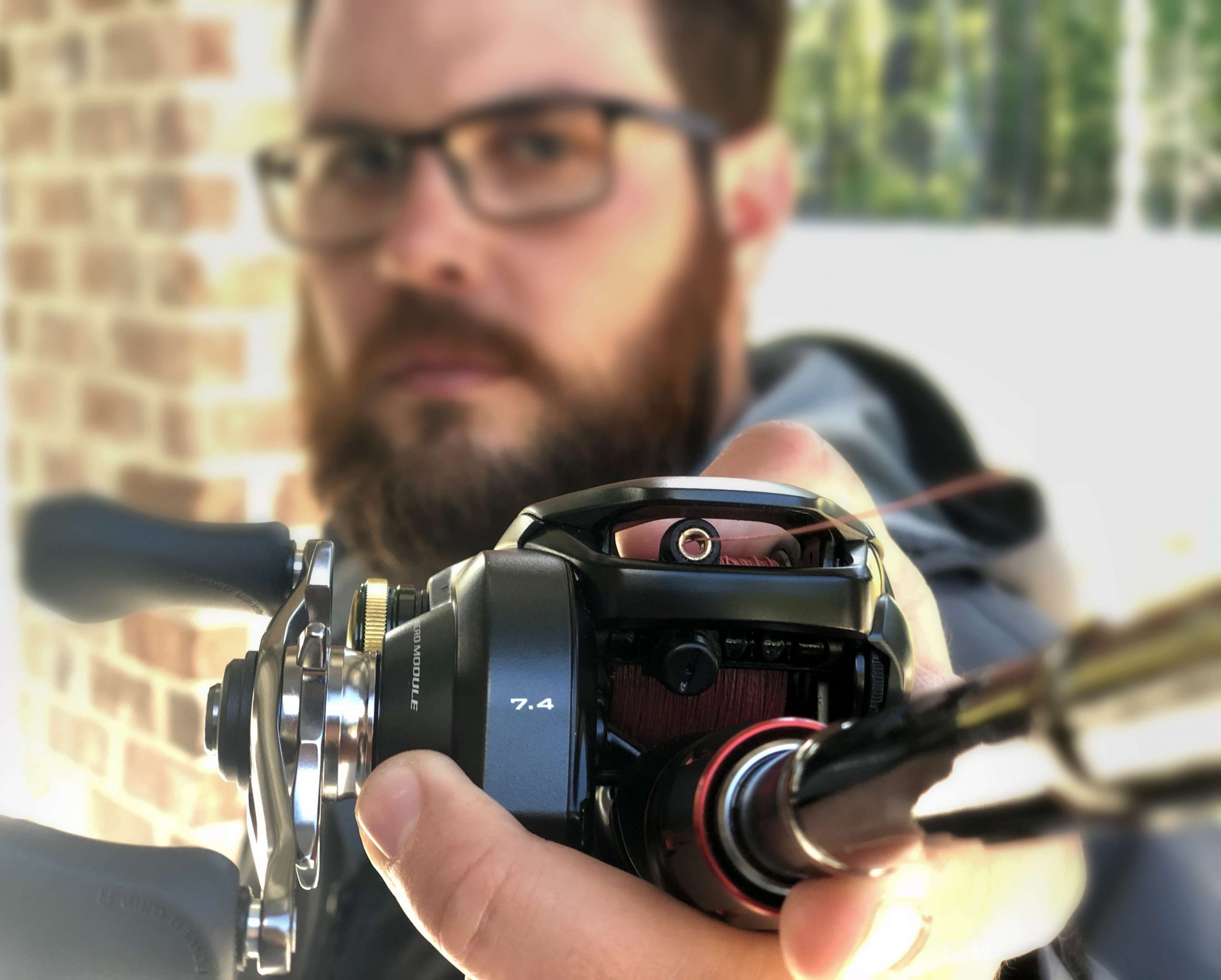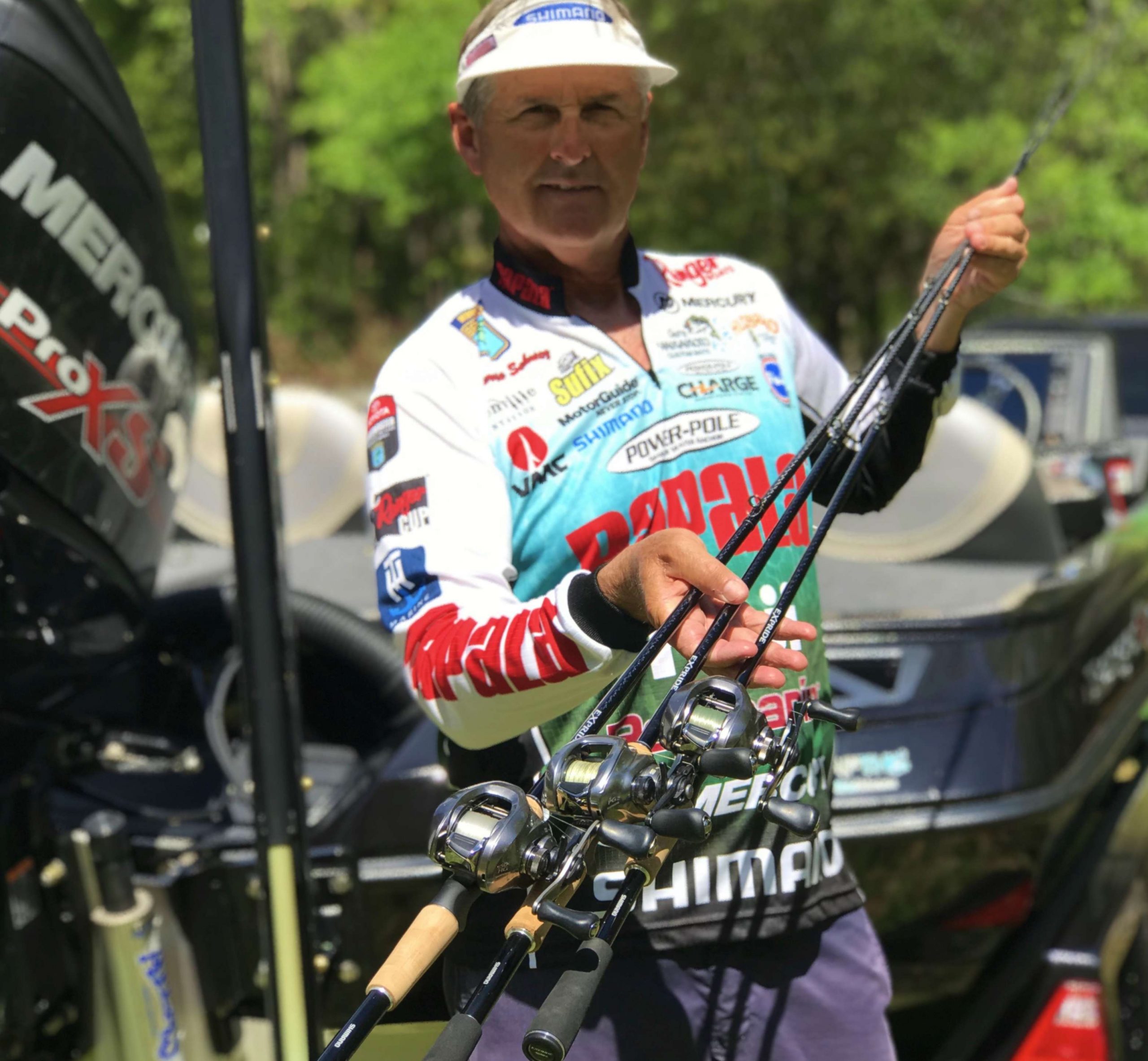
In my many years of competing, I’ve seen countless changes in the sport … particularly when it comes to the equipment we use. Included in that mix are baitcasting reels — their overall design, form and function.
When I started, round reels were the norm. Then came lower profile reels, like the Lew’s Speed Spool and Shimano Bantam — baitcasters that transformed the sport. Reels with true built-in ergonomics. They were lighter, too.
Soon, other manufacturers followed suit. And, with that movement, further refinements evolved. Like smoother drags, infinite anti-reverse, spool tension control and perhaps the most significant — a much wider range of retrieve ratios.
A need for speed
By today’s standards, the reels I began my career with would be considered slow. Most featured 4.7:1 ratios. That meant for every full turn of the crank handle, the spool would revolve less than five times.
When 6:1 ratios were introduced, it meant less winding with a higher rate of retrieve for moving baits, like spinnerbaits and lipless crankbaits. And we felt that was a blessing.
Nowadays, 6:1 is considered only an average speed. Companies like Shimano have introduced reels that reach an 8.5:1 ratio. Seeing the trend, I asked one of their tech guys for clarification. According to Trey Epich, Shimano’s Product Planning Manager for Rod and Reel Development, the demand for faster reels isn’t going away anytime soon. But he adds that there is still plenty of demand for slower reels, too.
“Angler awareness for the most suitable gear ratio (as it pertains to technique) has rapidly expanded over the past decade,” he reports. Adding that the amount of web-based content discussing the benefits of different ratios for various applications has made it easy for anglers to research and choose which speed is best for them.
My son Daniel is a sales rep for Shimano in the southeast, and he agrees. “Dealers are keenly aware of the buying trends in their respective markets. The demand for high-speed reels has never been greater, but it varies somewhat from one season to another. Take Lake Guntersville, for example. It’s a 12-month fishery, and it’s really diverse. When deeper patterns are working, anglers want a slower reel, so that they can achieve maximum depth at the correct speed with large-profile crankbaits. When the flipping bite’s on, they want a higher gear ratio for quicker line pickup. It’s all about the technique involved,” he says.

Spin vs. cast
Epich adds that the trend isn’t exclusive to baitcasting equipment.
“People are beginning to pay attention to gear ratios and IPTs (inches per turn) in spinning reels just like they are in baitcasters,” he claims. “There’s a micro trend of bass fisherman going to larger reels — like our 4000 series Stella, Twin Power and Sustain — for quicker line pickup. We’re monitoring this closely to see if and how that demand might grow.
“That said, however, most of our customer base still prioritizes lighter, more ergonomics reels in their spinning selections … which the 1000 and 2500 sizes offer.”
Regardless of whether your preference is for baitcasting or spinning, the speed at which your reel recovers line should be relative to the technique or lure involved. I feel this is not only true with deep cranking and flipping, it’s important with topwaters, too.
If I’m throwing a prop bait, for example. I want a lower gear ratio simply because I want to maintain a slower presentation. I feel fast reels tend to speed the process and work against the way I fish a prop bait. The same holds true for poppers.
If, on the other hand, I’m throwing a buzzbait, I’ll opt for a high-speed reel. There, I’m steadily moving the bait and covering water. A high-gear reel is more efficient, and it will reduce fatigue while helping me maintain a consistently higher retrieve speed.
Fore-casting the future
I asked Epich where he saw the market heading and how he felt Shimano might respond.
“I think we’re pretty comfortable in the space we’re in now, especially with our new lineup of Bantam, Chronarch and Curado reels,” he confides. “Each is offered in three speeds, ranging from as low as 6:1, to as much as 8.5:1. And though the trend toward our High Gear (HG) and Extra High Gear (XG) reels continues, I don’t anticipate our gear ratios going much higher than they are right now.”
Whether that holds true or not, I’m certainly glad they reached their current levels. Compared to the reels I started with decades ago, these newer, faster reels are definitely making my fishing better … and a whole lot more pleasant.

